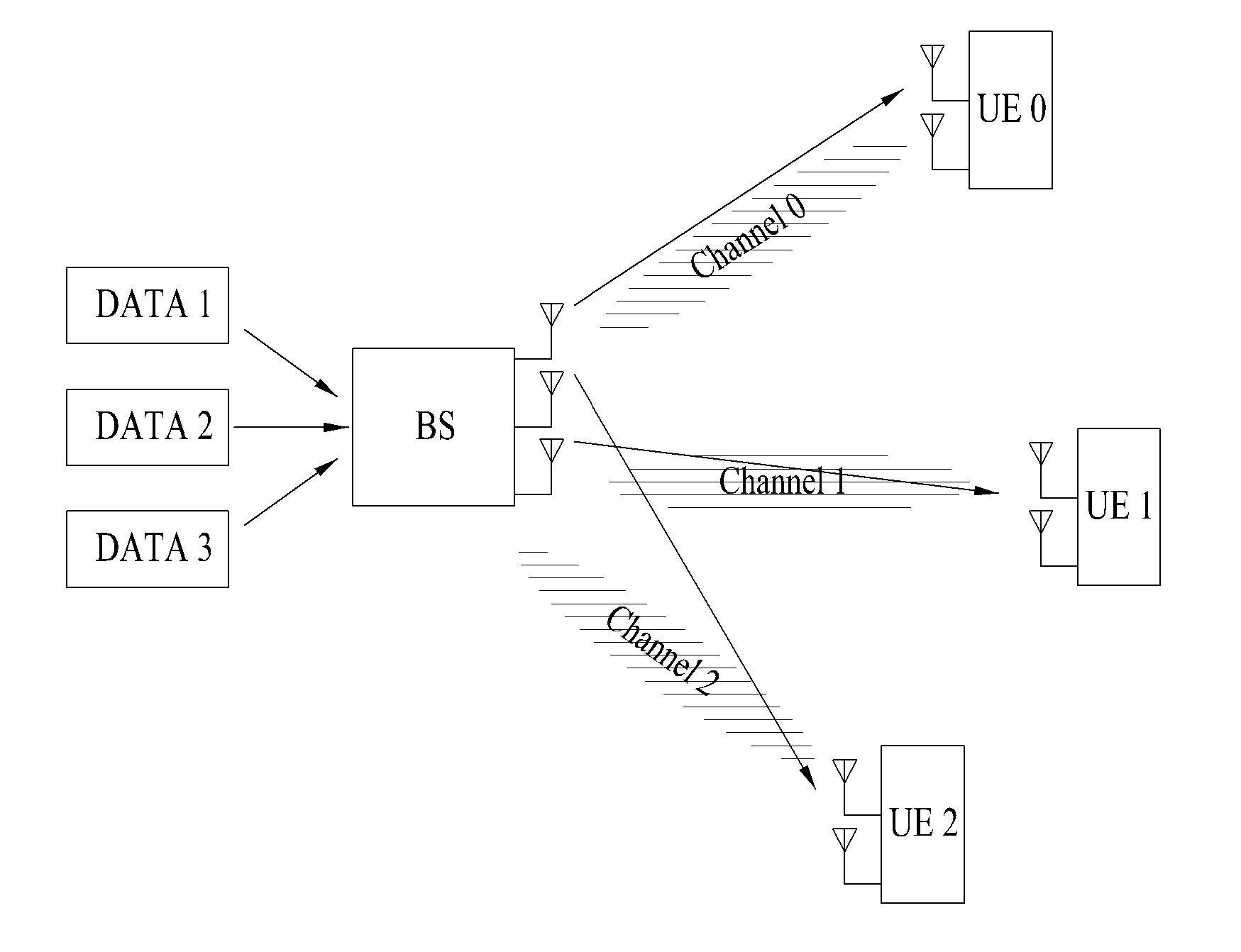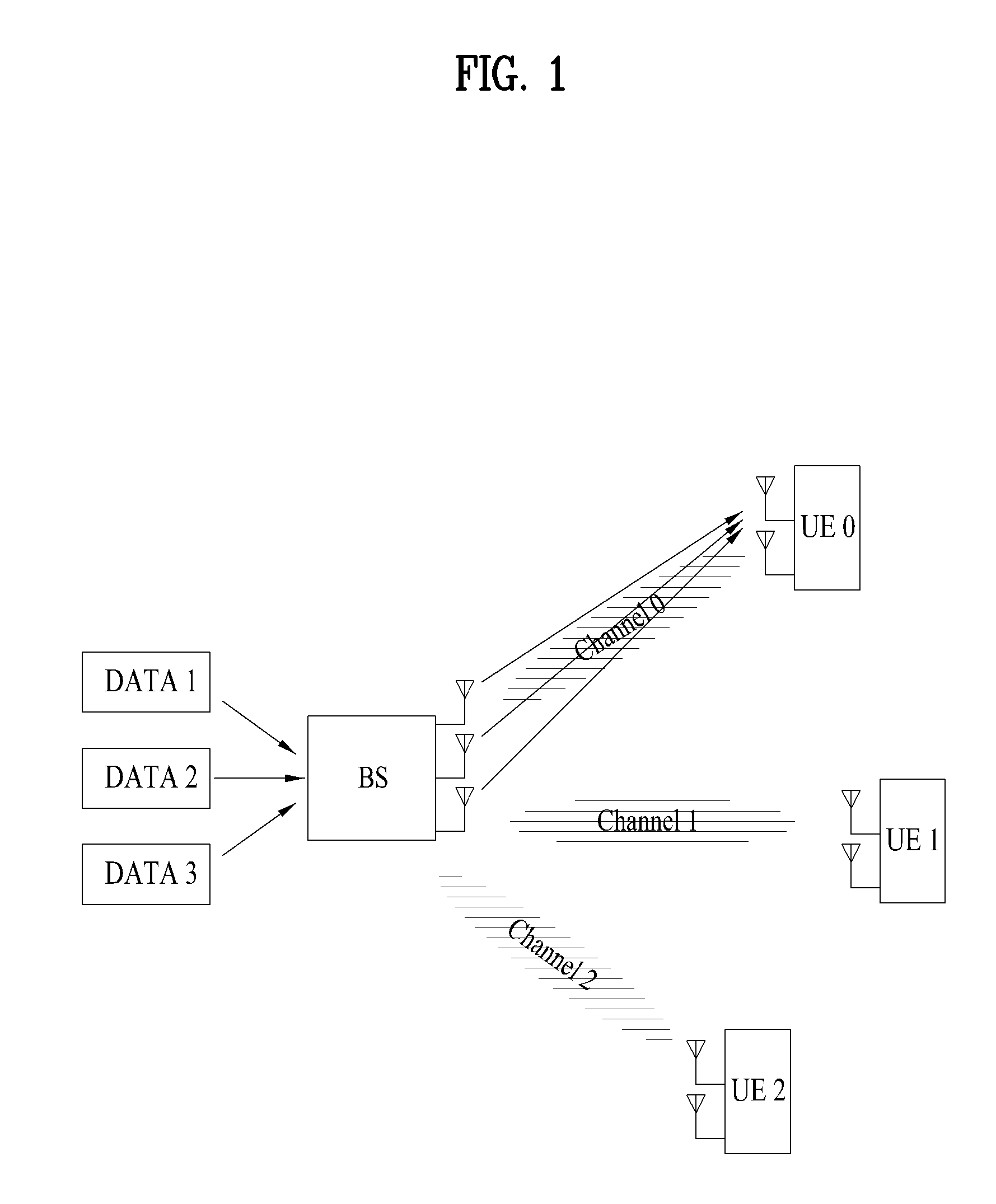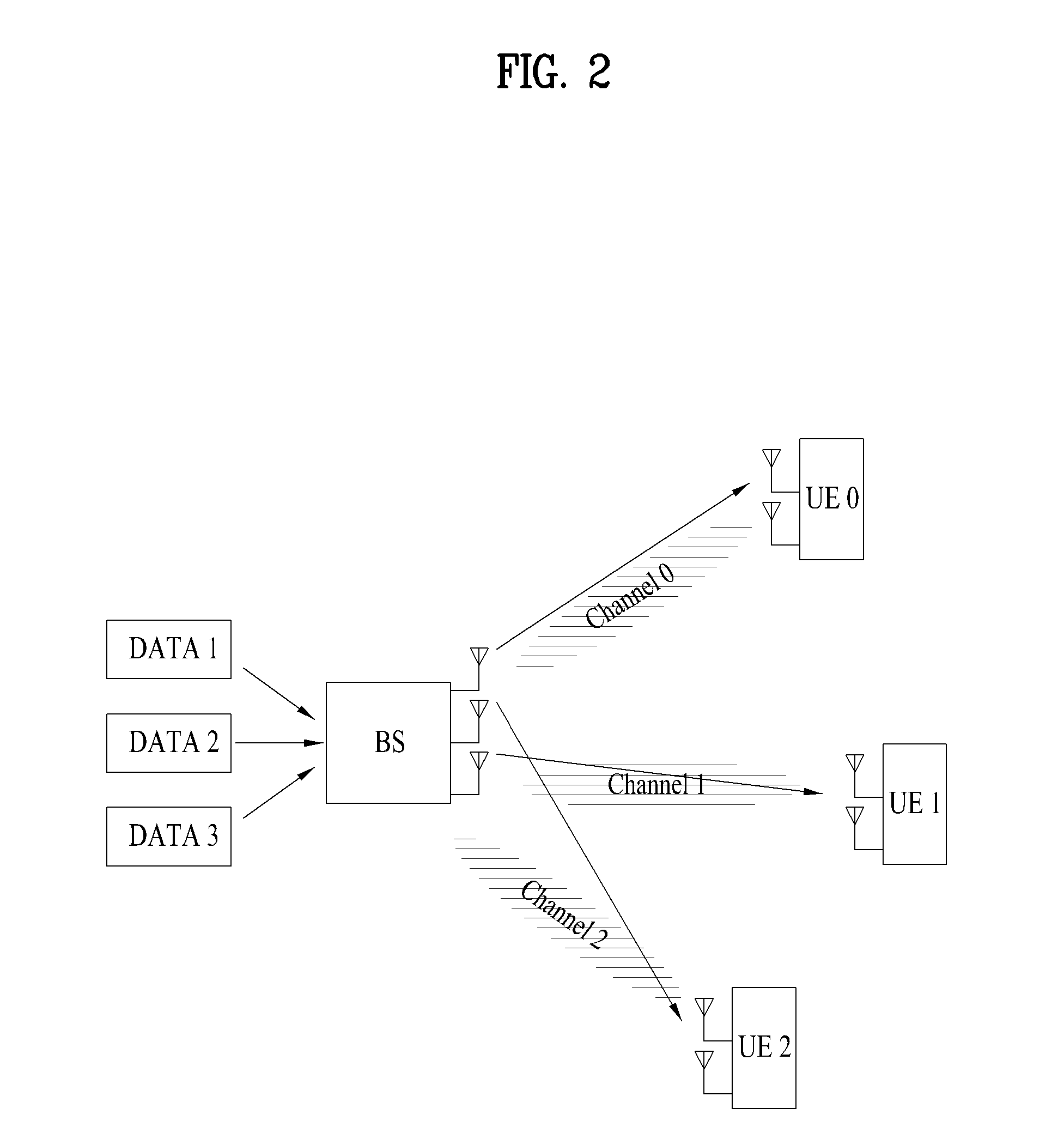Method and base station for transmitting downstream link data, and method and user device for receiving downstream link data
a downstream link and data transmission technology, applied in the field of wireless communication systems, can solve problems such as deterioration of overall system throughput, achieve the effects of reducing the time required for switching the transmission/reception (tx/rx) mode of user equipment (ue), reducing the time required for switching the transmission/reception mode, and reducing the time required for demodulating user data transmitted
- Summary
- Abstract
- Description
- Claims
- Application Information
AI Technical Summary
Benefits of technology
Problems solved by technology
Method used
Image
Examples
embodiment 1-1
Fixed DMRS set is Used Per Rank
[0123]The DMRS set may be predefined according to the number (i.e., rank) of layers allocated to the UE. For example, in the case of Rank-3 transmission, DMRSs corresponding to layers from Layer-0 to Layer-2 may be utilized in Table 1. If the mapping relationship of Type-1 is achieved between layers and DMRSs, DMRSs of {1C, 2C, 1D} may be adapted to transmit user data for one or more UEs receiving Rank-3 transmission. In so far as a DMRS set used for a specific rank is predefined, other DMRS sets (for example, {1D, 2D, 3D}) may be utilized for Rank-3 transmission.
[0124]Based on signaling from the BS or blind decoding of the UE, the UE can recognize how many layers have been allocated to the UE. Accordingly, according to Embodiment 1-1 in which a DMRS set is fixed per rank, the UE can detect its own DMRS(s) from among DMRSs transmitted from the BS. Moreover, the UE can demodulate UE data transmitted from one or more layers on the basis of the detected D...
embodiment 1-2
Contiguous DMRS(s) Starting from a Specific Layer are Used
[0125]An arbitrary DMRS set may be utilized to transmit the same rank during each transmission time. In this case, information indicating which DMRS set is used is transferred to the UE. For example, not only a rank for the UE but also a start DMRS may be adapted to indicate a DMRS set used for data transmission to the UE. Referring to Type-1 of Table 1, the UE may demodulate data transmitted to the UE using 4 DMRSs (i.e., {1D, 2D, 3C, 4D}) starting from 1D, namely, the UE may demodulate UE data through 4 layers corresponding to 4 DMRSs. In another example, provided that a start DMRS is set to a DMRS corresponding to Layer-6 of Table 1 and a rank is set to 3 (Rank-3), 3 DMRSs may start from 3D in Type-1 and may be cyclically allocated to the UE. That is, the UE may use the allocated DMRSs {3D, 4D, 1C} to demodulate a reception layer.
1-3. Mapping of Layer to DMRS According to Feedback Mode
[0126]The mapping relationship between...
PUM
 Login to View More
Login to View More Abstract
Description
Claims
Application Information
 Login to View More
Login to View More - R&D
- Intellectual Property
- Life Sciences
- Materials
- Tech Scout
- Unparalleled Data Quality
- Higher Quality Content
- 60% Fewer Hallucinations
Browse by: Latest US Patents, China's latest patents, Technical Efficacy Thesaurus, Application Domain, Technology Topic, Popular Technical Reports.
© 2025 PatSnap. All rights reserved.Legal|Privacy policy|Modern Slavery Act Transparency Statement|Sitemap|About US| Contact US: help@patsnap.com



